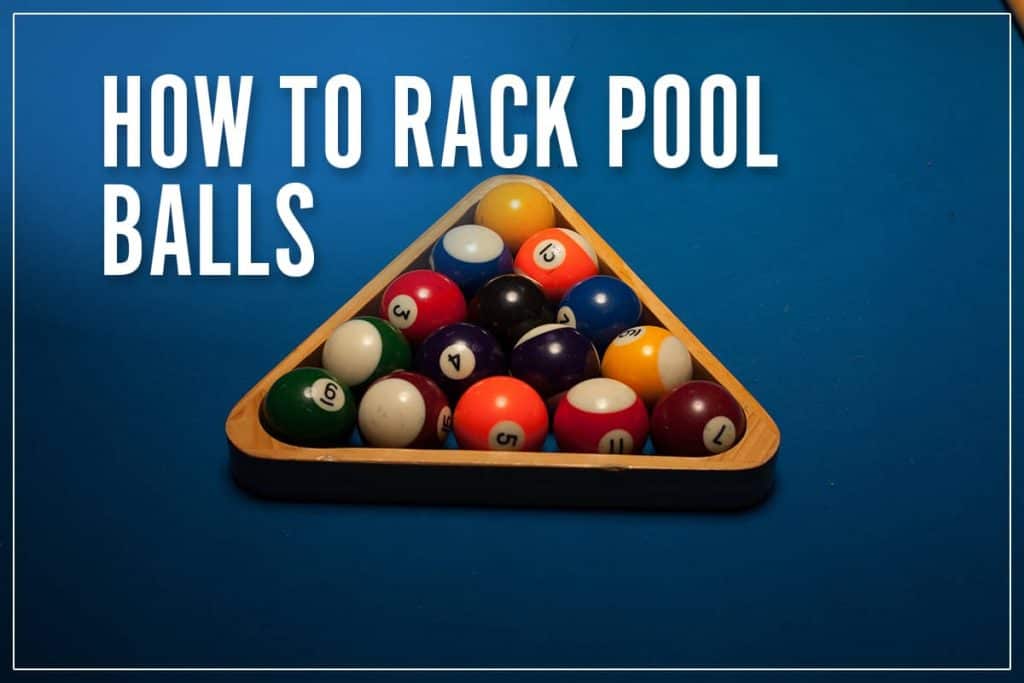Ever wondered what separates a casual pool player from a seasoned pro? It all starts with the rack, and mastering this fundamental skill is the key to unlocking your potential on the felt.
From the casual game in a local pub to the high-stakes tournaments, the initial arrangement of the pool balls, or the "rack," is the foundation upon which the entire game is built. A well-executed rack can set the stage for a perfect break, leaving your opponent scrambling, while a sloppy rack can lead to a missed opportunity or a disadvantageous position. The meticulous setup of the balls is often overlooked, but it is undeniably crucial. This article will delve into the intricacies of achieving the perfect rack, offering insights and techniques that apply across various pool game variations, including straight pool, eight-ball, and more. Learn how to consistently set up your shots effectively and gain a competitive edge on the table!
To emphasize the importance of proper racking, let's look at the essential elements:
- Apex Ball Placement: The apex ball, the one at the very front of the rack, is arguably the most critical. Its position directly impacts the break and the subsequent spread of the balls.
- Tight Racking: The tighter the balls are packed together, the better the break will be. A snug rack ensures that the force of the cue ball is transferred efficiently, maximizing the chances of scattering the balls effectively.
- Manual Locking: Sometimes, even with a tight rack, some balls might shift slightly. Manually locking the balls into place can prevent this and ensure a solid starting formation.
- Tapping Down: Using a gentle tapping motion, often with the bridge hand, can help to settle any loose balls and further solidify the rack.
The principles of racking are universal, regardless of the specific game being played. Whether you're aiming for a precise break in straight pool or setting up for a strategic run in eight-ball, the fundamentals remain constant. Consider the key factors like ball placement, alternating solids and stripes, and the overall tightness of the rack. These considerations will allow you to elevate your game.
Here is the table that explains how to rack an 8-ball billiards, the most popular way:
| Step | Description |
|---|---|
| 1 | Gather Your Equipment: You'll need all 15 numbered balls, the cue ball, and a triangle rack. Ensure your balls are clean and free of debris. |
| 2 | Foot Spot: Locate the foot spot on your pool table. This is a small marking on the table's surface, near the end where the balls will be racked. |
| 3 | Position the Triangle: Place the racking triangle in position along the foot string of the table. Center the rack along the foot string with the top of the triangle at the foot spot. |
| 4 | Apex Ball: Place the apex ball (the one at the front of the triangle) directly on top of the foot marking within your diamond rack. |
| 5 | Alternating Solids and Stripes: Arrange all fifteen numbered balls within the rack, making sure they form a tight triangle shape. Alternate the stripes and solid balls throughout the rack. |
| 6 | 8-Ball Placement: The 8-ball should be placed in the center of the triangle. This position is crucial for both the break and the flow of the game. |
| 7 | Corner Balls: At least one stripe and one solid ball should be in the back corners of the triangle. |
| 8 | Tighten the Rack: Gently squeeze the balls with your fingers to ensure they are packed as tightly as possible. This will make for a better break and more strategic play. |
| 9 | Remove the Triangle: Carefully remove the triangle, leaving the perfectly racked balls ready for the break. |
Racking the balls is the first step. It is not just about setting up the game; it's about ensuring the highest quality of the game itself. The slightest imperfection can affect the match's direction. From ensuring the apex ball is properly placed for the break to tightly packing every stripe and solid ball, every small step plays a role.
This article is designed to ensure that you master the art of racking in no time. Begin by placing the balls on a table in order. Position the cue ball at one end of the table and arrange all 15 other balls from your chosen starting position. Make sure all of the balls are accounted for before beginning to arrange them. Start by ensuring that your pool balls are clean and free of debris.
Different pool games utilize different racking methods. For eight-ball, the 8-ball goes in the center. In nine-ball, the 1-ball goes at the apex, with the 9-ball in the center of the diamond. In straight pool, the rack is often randomized, but still uses the standard triangle rack.
The APA (American Poolplayers Association) has more lenient racking rules. The BCA (Billiard Congress of America) rules provide a more standardized approach. There are different styles and ways to rack pool balls depending on the pool game or billiard game being played. Now that you know how to rack all the most popular forms of pool and snooker, the table's your oyster.
Following a simple process allows you to arrange the pool balls accurately, allowing for an enjoyable and competitive game of pool. The correct arrangement can give you a more competitive edge on the table.



Detail Author:
- Name : Darlene Ritchie
- Email : jermain16@reilly.com
- Birthdate : 2001-03-03
- Address : 958 Maurice Summit Apt. 453 East Lupeville, ND 42519-1377
- Phone : 1-732-551-4277
- Company : West Ltd
- Job : Life Scientists
- Bio : Et dolor sapiente eum pariatur nihil totam. Accusantium delectus et magnam minus repellat voluptatum.